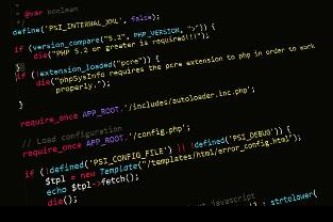摘要认证(Digest Authentication)是一种网络认证方法,它通过在客户端和服务器之间传递加密的摘要信息来验证用户身份,在Python中,可以使用httplib库实现摘要认证,本文将详细介绍如何在Python中调用摘要认证并将其加入到JSON中。
我们需要了解摘要认证的基本原理,摘要认证需要客户端提供用户名和密码,服务器根据这些信息生成一个摘要(Digest),客户端将摘要发送给服务器进行验证,如果摘要匹配,服务器允许客户端访问资源;否则,拒绝访问。
在Python中,我们可以使用httplib库来实现摘要认证。httplib库提供了一个DigestAuthHandler类,用于处理摘要认证,以下是一个简单的示例:
import httplib
创建一个HTTP连接
conn = httplib.HTTPConnection("example.com")
创建一个摘要认证处理器
auth_handler = httplib.DigestAuthHandler()
设置用户名和密码
auth_handler.add_password(realm="Example Realm", uri="/path/to/resource", user="username", passwd="password")
将认证处理器添加到连接
conn.set_auth_handler(auth_handler)
发送请求
conn.request("GET", "/path/to/resource")
获取响应
response = conn.getresponse()
print(response.read())
现在,我们来看如何将摘要认证加入到JSON中,通常情况下,摘要认证是通过HTTP头部进行的,而不是通过JSON,如果API要求将认证信息以JSON格式发送,我们可以将摘要认证信息添加到请求体中。
以下是一个将摘要认证信息添加到JSON中的示例:
import httplib
import json
import hashlib
import hmac
创建一个HTTP连接
conn = httplib.HTTPConnection("example.com")
准备摘要认证所需的数据
username = "username"
password = "password"
realm = "Example Realm"
uri = "/path/to/resource"
nonce = "random_nonce"
cnonce = "client_nonce"
qop = "auth"
生成摘要认证的响应
A1 = username + ":" + realm + ":" + password
A1_hash = hashlib.md5(A1.encode('utf-8')).hexdigest()
A2 = "GET:" + uri
A2_hash = hashlib.md5(A2.encode('utf-8')).hexdigest()
response = hmac.new(A1_hash, nonce, digestmod=hashlib.md5).hexdigest()
response = hmac.new(response, A2_hash, digestmod=hashlib.md5).hexdigest()
准备JSON数据
data = {
"username": username,
"realm": realm,
"nonce": nonce,
"nc": "00000001",
"cnonce": cnonce,
"qop": qop,
"response": response
}
发送请求
headers = {
"Content-Type": "application/json"
}
conn.request("POST", "/path/to/auth", json.dumps(data), headers)
获取响应
response = conn.getresponse()
print(response.read())
在这个示例中,我们首先生成了摘要认证所需的响应,然后将其添加到JSON数据中,我们将JSON数据作为请求体发送给服务器,并设置Content-Type头部为application/json。
需要注意的是,这种方法并不是标准的摘要认证实现方式,通常情况下,摘要认证是通过HTTP头部进行的,在实际应用中,建议遵循API的要求和规范,以确保正确实现摘要认证。
抖音足球直播
抖音足球直播
企鹅直播
企鹅直播
足球直播
爱奇艺直播
爱奇艺足球直播
足球直播
足球直播
iqiyi直播
足球直播
足球直播
QQ足球直播
QQ足球直播
足球直播
足球直播
QQ足球直播
QQ足球直播
足球直播
足球直播
快连
快连
快连
快连下载
快连
足球直播
足球直播
足球直播
足球直播
足球直播
足球直播
足球直播
足球直播
足球直播
新浪足球直播
新浪足球直播
足球直播
足球直播
有道翻译
有道翻译
有道翻译
有道翻译
wps
wps
wps
wps
足球直播
足球直播
足球直播
足球直播
足球直播
足球直播
足球直播
足球直播
新浪足球直播
新浪足球直播
足球直播
足球直播







还没有评论,来说两句吧...